In pit bull fancier circles, you’ll hear lots of talk about “blue nose” and “red nose” pitties. To outsiders, this lingo can be confusing, and rightfully so.
Typically, the only nose colors we hear about are red on a reindeer or brown on the office sycophant. But in pit bulls, nose color is used not only to describe the pigment of these powerful pooches’ noses but their overall appearance too.
Today, we’ll examine the blue nose pit bull together and separate fact from fiction.
Key Takeaways: What Is a Blue Nose Pit Bull?
- Blue nose pit bulls are normal pit bulls who simply display a particular color pattern. Specifically, they have “blue” coats (which are really better described as gray), and they have gray or “blueish” noses.
- Aside from their coloration, blue nose pit bulls don’t exhibit many significant differences from other types of pit bulls. Blue nose pit bulls reach the same basic size as other pitties, and they also have similar personalities, aptitudes, and care requirements.
- Like all pit bulls, blue nose pit bulls are generally friendly, human-oriented pups who make good pets for the right families. But, like all large breeds, proper socialization and training are important for safety, and they do best in situations in which they receive lots of stimulation, exercise, and attention from their people.
What Is a Blue Nose Pit Bull?
The term “blue nose pit bull” just describes a color variant of pitties, like the terms “black” or “wheaten” do when applied to Scottish terriers.
“Blue” is a term frequently used in the dog world to describe a gray color that ranges from light silver to deep charcoal. The term “blue nose” is a variation of this, as blue nose pit bulls have a gray or near-black nose and a blue coat that may be solid or patched in appearance.
That’s it — they’re simply grayish-blue pitties with gray noses.
Pit bulls are often confused with other bully breeds, as the subgroup shares some identical features like a broad head and powerful build. There are subtle differences you can look for, however, to tell them apart.
It isn’t always easy, but with some practice, you’ll see the differences, as subtle as they may be.
- American pit bull terrier: The official name of pit bulls, the APBT got his start as a catch dog and farmhand on early American homesteads. He looks a little more terrier-like than many other bully breeds and has a less blocky muzzle.
- Staffordshire bull terrier: A foundation breed of the APBT, the Staffordshire terrier (or Staffy) has a stockier build than the pit bull. His head is more rounded in appearance with a shorter, blockier muzzle and a signature “Staffy smile” expression seen.
- American Staffordshire terrier: A cousin of the APBT, Am Staffs weigh more than their pittie relatives. All Am Staffs should have the “blue nose” appearance, too, since “red nose” or liver coloration is discouraged by the AKC standard.
- American bulldog: Standing up to 28 inches at the shoulder and weighing as much as 120 pounds, this workhorse of a doggo is far larger than the APBT. His head is also much bigger and his muzzle is shorter and wider.
- American bully: A relatively new member to the bully breed scene is this APBT cousin. Appearing more like a bulldog than a terrier, he has a boxier build than the pit bull.
Blue-Nose Pit Bulls 101: Why Are Blue Nose Pit Bulls Blue?
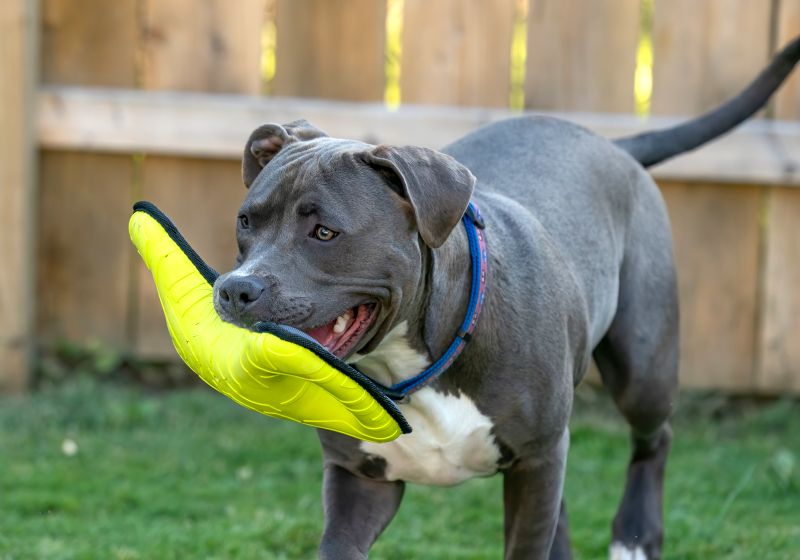
To understand blue-colored dog breeds a little better, we need to take a quick dive into doggo coat genetics.
Despite the rainbow of colors and coat patterns found in our four-legged friends, there are just two basic pigments at the root of them all: red (pheomelanin) and black (eumelanin).
Genetics are the true pup-coat Picasso, mixing and mingling to create the striking looks we all know, like blue, merle, brindle, and beyond. These genes affect the level of melanin in every hair shaft from head to toe, making your pooch dark, light, or a mystery mix.
So, in simpler terms, blue nose pit bulls aren’t actually blue. Crazy, we know!
Blue nose pit bulls actually exhibit an appearance best described as “diluted” black.
Blue coloration is a recessive gene, requiring two copies of the D allele to occur, meaning you need two parents carrying the gene to make a blue puppy.
This makes blue coloring less common than some other coat markings.
It also means that blue-nose pitties can produce non-blue offspring, if the other parent in the equation doesn’t also possess the color dillution gene.
Learn More: Canine Chromosomes — How Many Do Dogs Have?
How Are Blue Nose Pit Bulls Different from Other Pit Bulls?
One of the only significant ways in which blue nose pit bulls vary from other pit bulls is their appearance — they’re still the same breed.
Some Fido fanciers may say personalities vary by color, but this is an age-old claim seen in other breeds with various color options too, like Labradors, beagles, and poodles. Personalities vary from dog to dog and can be affected by breeding and rearing; your pooch’s coat has little to do with it.
There are, however, some slight health differences associated with blue coloring.
Blue nose pits, like other blue dogs, are at risk of a condition called alopecia that causes thin, dull hair, or hair loss. Sometimes, this only appears in adolescence and clears up, other times, it’s a lifelong condition.
For doggos with thinning or missing hair, special care should be taken in the summer to prevent sunburn. This might mean tossing a light t-shirt on your pooch, limiting outdoor time, and investing in pup-friendly sunscreen.
Life with a Blue Nose Pit Bull: Do Blue Nose Pit Bulls Make Good Pets?
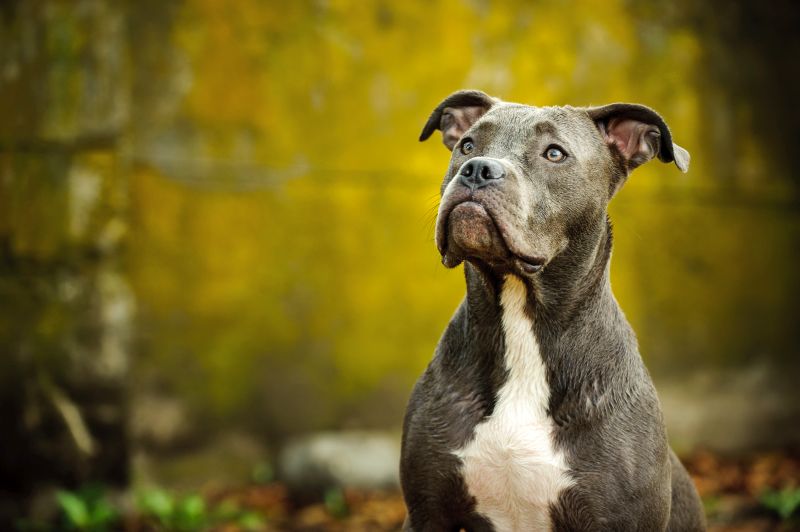
Like all other doggos, blue nose pit bulls make excellent pets for the right owners. The pit bull has a range of needs that fit in well with some families but may cause conflict in others, particularly those who don’t have time for an active companion that needs daily attention.
Run down this quick overview of the breed with us to learn more about blue nose and other pit bull varieties:
Size & Considerations
A muscular, medium-sized breed, the pit bull varies from 17 to 21 inches at the shoulder and weighs between 30 and 60 pounds. This is a large variation in weight, of course, but the UKC standard stresses the importance of proportion here. As long as your pooch isn’t excessively thin or chunky, he’s right where he belongs.
With this size comes brute strength that might surprise you. Pit bulls are powerful dogs built to grab and hold animals much larger than themselves. With thick necks and broad shoulders, he can easily take you off your feet while walking if he bolts at a squirrel unexpectedly. With that in mind, make leash training an early priority.
Coat & Grooming
Pit bulls have a short coat that is glossy in appearance and slightly stiff in texture. Besides blue, they can be all colors and patterns except for albino and merle, which are deemed disqualifiers by the UKC. Brindle, fawn, and tricolor are some of the most common colors and patterns seen in pits.
Your pit bull’s coat will require little maintenance other than occasional bathing. Brushing helps with his shedding, as he will leave short, spiky hairs around the house year round. Regular nail trims, toothbrushing, and ear cleaning are also required to keep your pibble looking, feeling, and smelling his best. For pit bulls with skin conditions, more frequent or medicated bathing may be required.
The pit bull’s coat offers little insulation from the cold, making quick potty breaks a must during the winter. Keep him toasty in cold weather with a sweater during daily walks (just be sure to choose the size and cut of his clothing carefully, due to your pibble’s big shoulders).
Exercise Needs
While the pit bull’s grooming needs are minimal compared to other breeds, his day-to-day physical and mental requirements are a completely different story. They doggos aren’t for folks who want a dog keen on couch warming only — pitties want to party.
A working dog at heart, the pit bull needs daily exercise achieved through walks and backyard play or canine sports, such as agility. If you work long hours, hiring a dog walker for your pit for a mid-day walk might be a good idea (bordering on mandatory).
The best activities for him involve using his brain, too, as a lack of mental stimulation can lead to destructive behaviors, like chewing or nuisance barking. Things like nosework, walking games, and flirt poles are top-notch picks for him. Spring poles and other interactive toys are also excellent choices for keeping him occupied around the house and yard.
Training Your Blue Pit Bull
The pit bull is an intelligent breed who’s eager to please, but he can be stubborn.
While this independent streak can be frustrating at times, it’s important to keep all training positive and reward-based, as he’s a big softie under all that muscle. For best results, pack treats for each session and change things up occasionally to avoid boredom.
In addition to obedience and leash training in puppyhood, socialization is a must as soon as his vaccinations allow for it. He should meet human and dog friends in positive introductions to avoid aloofness later in life. If he’s going to live with cats or other small animals like rabbits, early introduction and lessons in manners are musts, as pit bulls have strong chasing instincts.
Health & Health Concerns
Pit bulls are hardy, with a typical dog lifespan of 12 to 14 years. They experience the ailments you’d expect in medium-sized breeds, including hip and elbow dysplasia and luxating patellas. They’re also at risk of other conditions, like cardiac disease, cataracts, and skin issues. Breeder health screenings for hip and elbow issues are recommended.
Keeping your pit bull at a proper weight through regular exercise and feeding him quality food can ease stress on his joints. Proper nutrition can also lessen the risk of some skin sensitivities occasionally seen in the breed, such as dye and additive allergies.
Ideal Living Situations and Families for Pit Bulls
The pit bull is a people-lover at heart. He isn’t happy merely existing in a pen in the backyard or patrolling the yard as a guard dog.
In fact, APBTs make pretty lousy guard dogs compared to other breeds. Sure, they might look intimidating, but pitties crave the attention of people and can likely be easily manipulated with a tasty treat and some sweet talk.
With that in mind, he’s a house dog and should live inside with his people. He needs attention regularly and can be a bit of a Velcro dog in sticking to your side around the house. He can also have separation anxiety, so crate training might be a good idea early on.
Pit bulls are good family dogs, but they can accidentally knock over small kids in passing. They also aren’t always conscious of their size and may insist on sitting on your toddler’s lap.
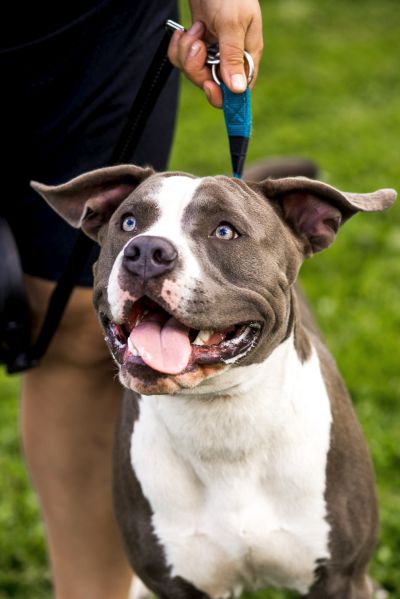
Regardless of whether you have kiddos or not, your pit will be happiest and thrive when he’s with his human family.
Proper socialization helps your pit bull meet new dogs and animals without issue, but he still may not be a fan of living (and sharing you) with them. He’s a terrier to the bone, and unlike other breeds like beagles, he might not enjoy a pack environment with several other dogs around the house.
Legal & Social Issues
This one isn’t so fun to talk about, but it comes with the territory of owning this breed.
Not only are pit bulls and other bully breeds banned by some apartment communities, towns, and even countries, but they can also make getting (or keeping) homeowner’s insurance a headache. Not all insurance companies have restrictions, however, so shop around to avoid an issue and always call ahead to check with your carrier before bringing a pit bull home.
Pit bulls are often targeted by breed bans at dog parks, groomers, and doggy daycares as well. Checking ahead of time is something you’ll get used to doing, unfortunately, but it’s worth it to avoid issues.
Most upsetting to many owners is the social stigma of having a pit bull.
You may notice people moving to the other side of the road while you’re out walking your dog or hear upsetting comments aimed at your pooch. In these situations, it’s best to keep to yourself and avoid engaging. Not only will it upset you, but it’ll also upset your dog. The best way to fight back is to help your pit bull be the best example of the breed he can be.
How Can You Find a Blue Nose Pit Bull?
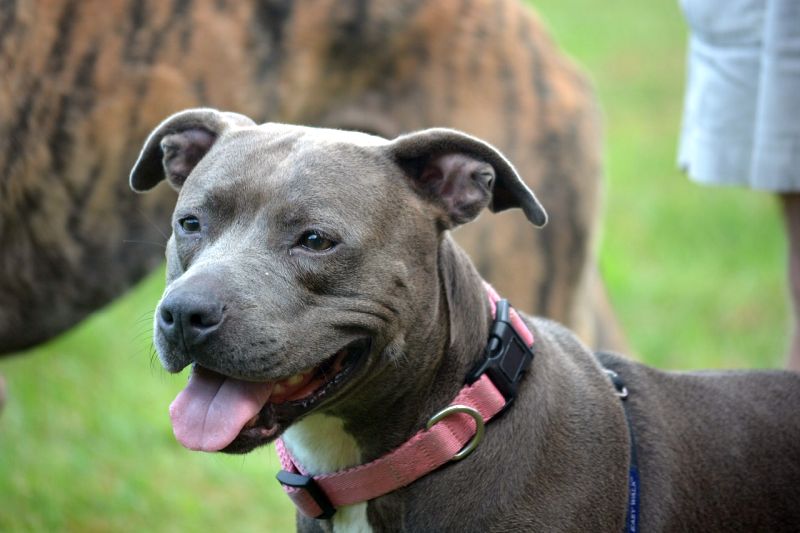
You can find a blue nose pit bull by seeking a responsible breeder. The UKC site has a breeder directory you can browse, or you can seek local breeder clubs in your area.
You can also search local breed rescues and shelters, as pit bulls are sadly one of the most commonly found breeds in animal shelters.
Oftentimes, breed rescues see entire litters of puppies surrendered along with their mama, giving you a variety of coat colors and patterns (including blue!) to choose from. Many rescues also offer discount or free spaying/neutering of pitties, too.
Finding an ethical breeder is vital if you’re looking to purchase rather than adopt a blue nose pit bull puppy. Unfortunately, because the color is less common than others, some backyard breeders have thrown health and conformation out the window in favor of color, leading to inbreeding and serious health concerns.
Blue Nose Pit Bull FAQs
Like the breed itself, there are many misconceptions out there about blue nose pit bulls. Let’s tackle the most common together.
Are blue nose pit bulls more aggressive than other pit bulls?
No; blue nose pit bulls show no behavioral differences from other pit bulls. Any dog has the propensity for aggressive if improperly raised, trained, or bred. All dogs should be socialized in puppyhood with people and other dogs to ensure a happy, healthy, and well-adjusted pooch.
Are blue nose pit bulls more expensive than others?
Some breeders may attach a premium price to a blue nose puppy for the name or rarity, as they are less common than other colors or patterns. While a slight difference in price may be seen, anything astronomical is a red flag. This is a common issue seen in backyard breeders seeking to profit off of a rare-sounding name, usually without the bare minimum of health testing. To avoid price gouging, seek responsible breeders only.
How can you tell if a dog is a blue nose pit bull?
A blue nose pit bull has a charcoal or blackish nose and a gray coat, ranging from a diluted silver to a dark slate color. While sometimes seen, blue eyes are not a requirement of blue nose pit bulls. In fact, blue eyes are a fault according to UKC standards.
What’s the difference between a red and a blue nose pit bull?
Blue nose pit bulls have a blue or near-black nose with gray coat coloring, while red nose pit bulls have a liver or brown nose. Red nose pit bulls have a reddish or tan coat. Both red nose and blue nose pit bulls may have white patches mixed in their coats. Appearance aside, there are no behavioral or size differences between the two.
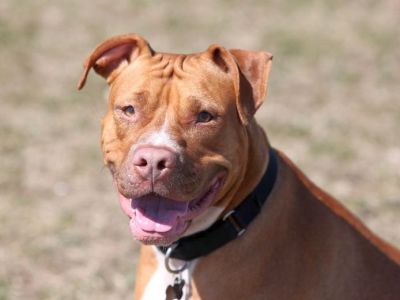
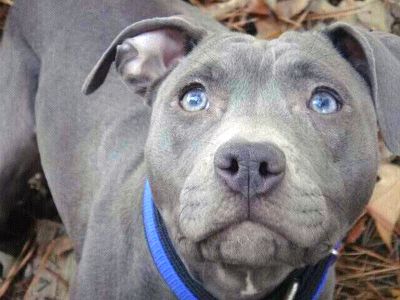
How much does a blue nose pit bull cost?
Blue nose puppy pricing varies from breeder to breeder, with factors such as location and show lines affecting the overall amount. You can expect to pay $500 to over $1000 for a puppy from most breeders. Remember to ask about health testing and always meet the parents of your pooch to make sure their temperament is sound.
You can also find a blue nose pit bull at most shelters, ranging from puppies to seniors with plenty of spunk left to keep you on your toes. Adoption fees vary from $50 to $250, fluctuating by the dog’s age and your location. Many rescues and shelters offer special discounted rates on pit bull adoptions as well.
***
Do you have a blue nose pit bull at home? Another type of pittie? Tell us about your fur kiddo in the comments!
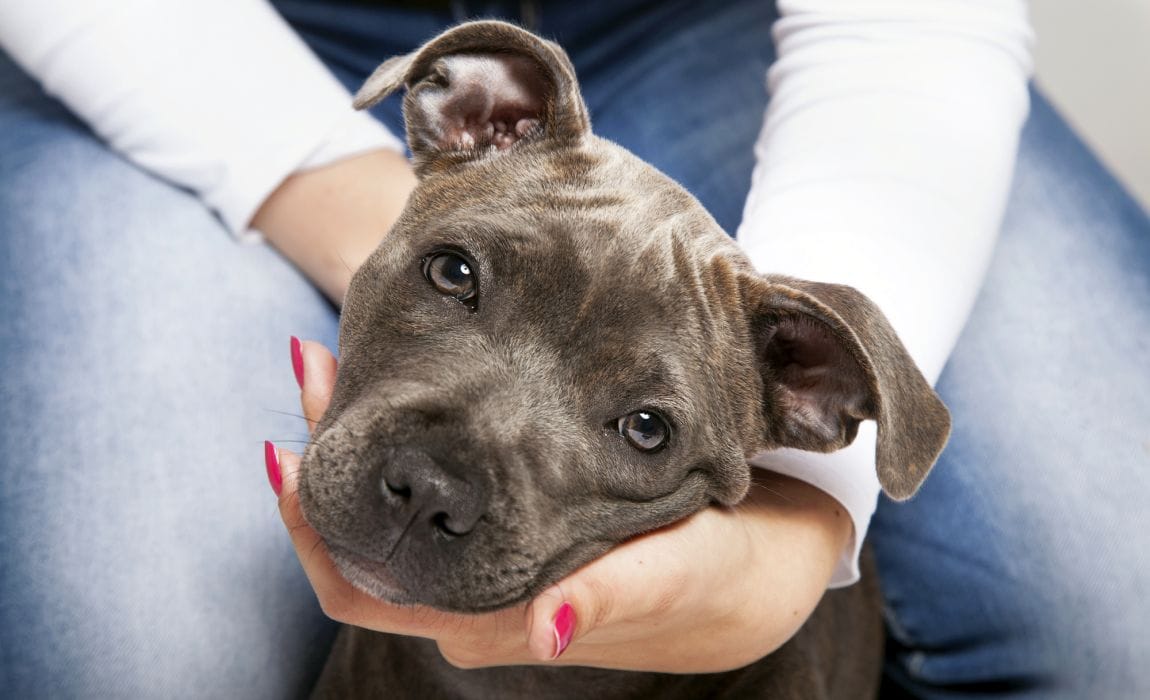

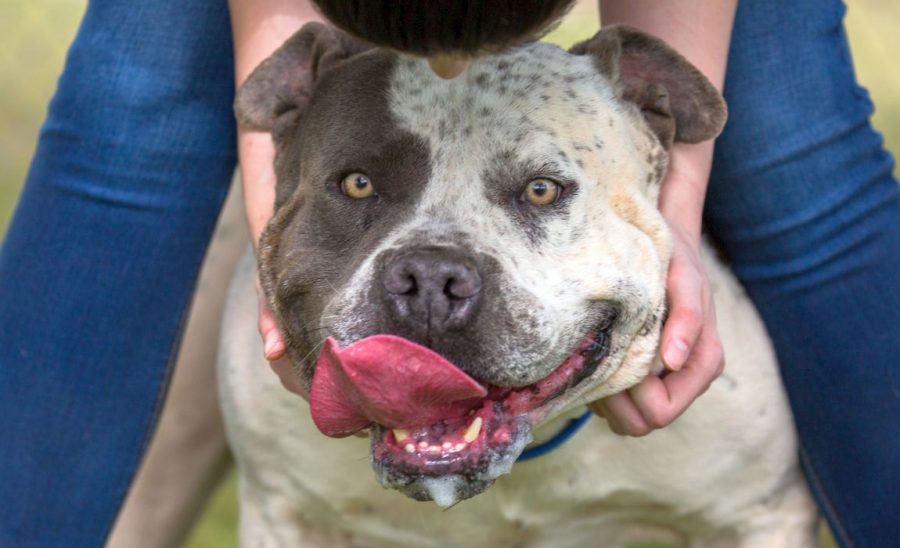


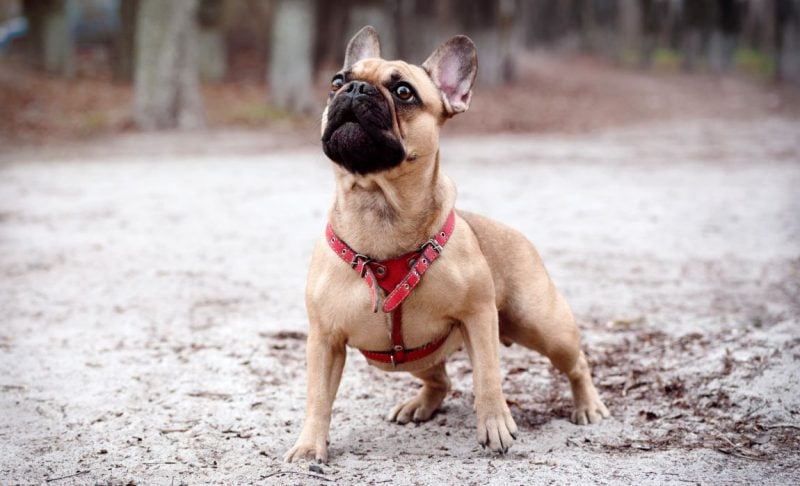
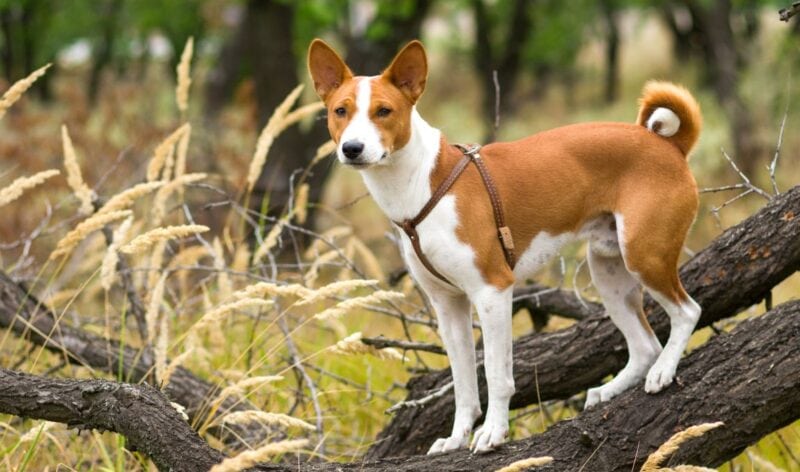
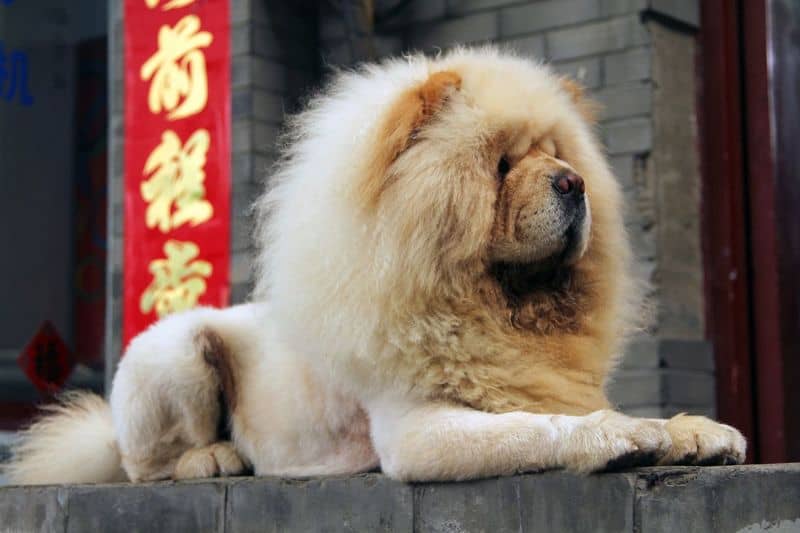
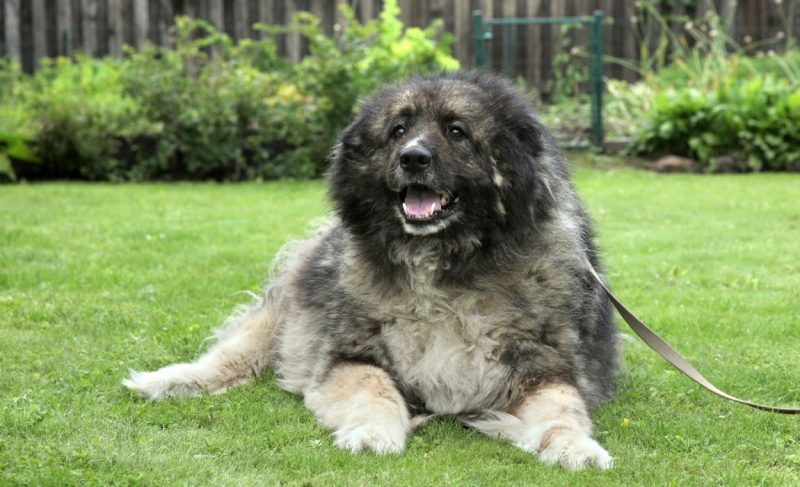
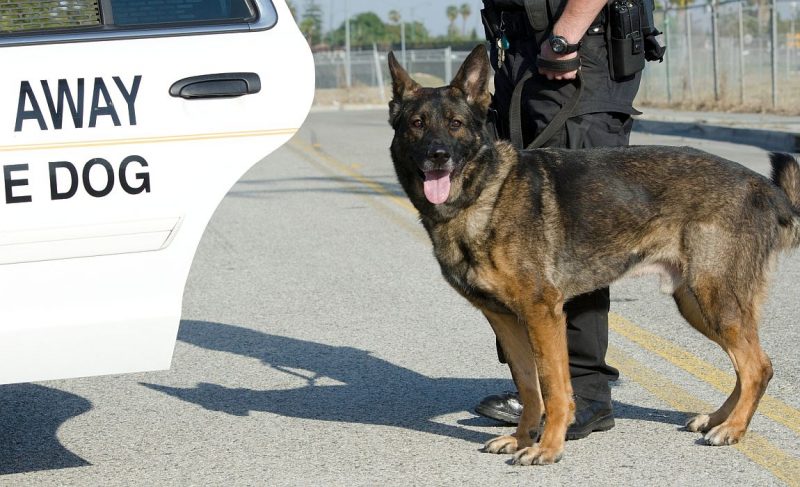
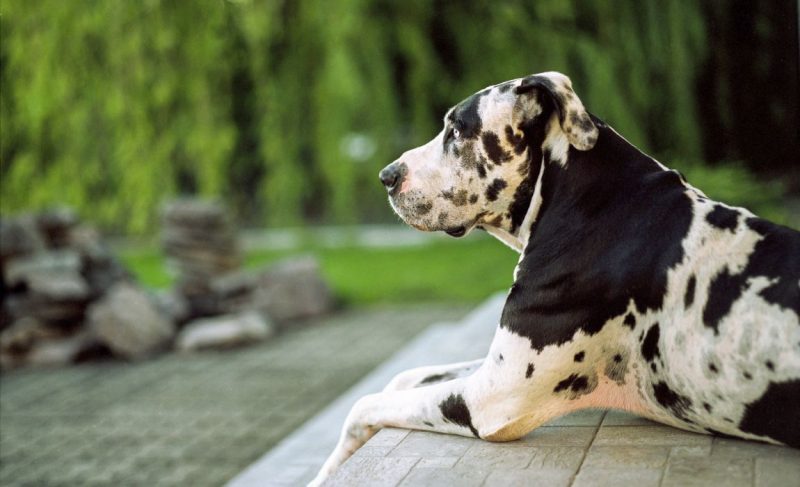
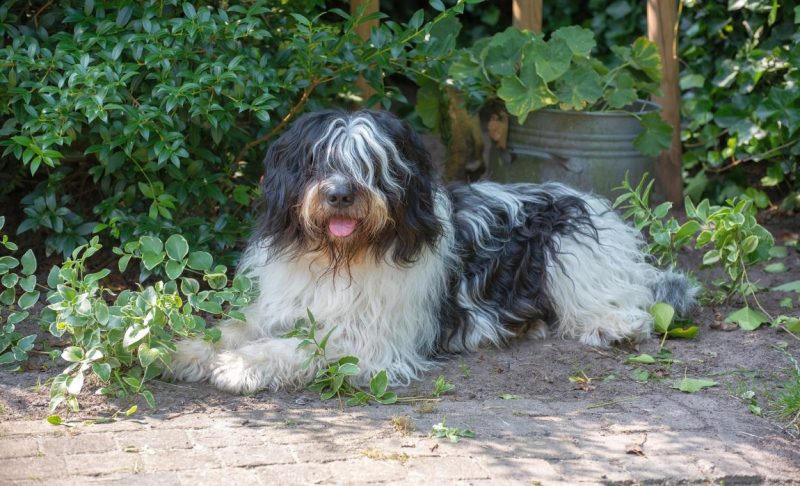

Leave a Comment